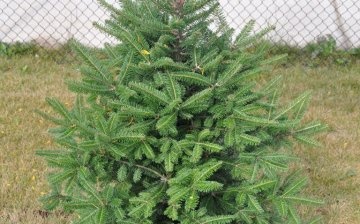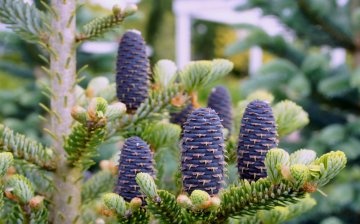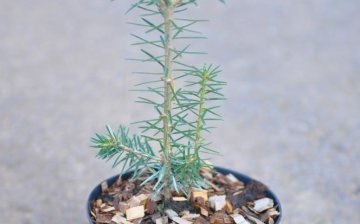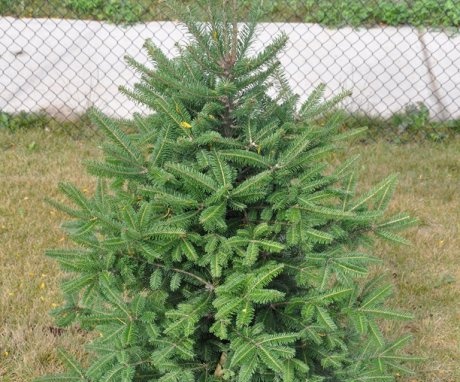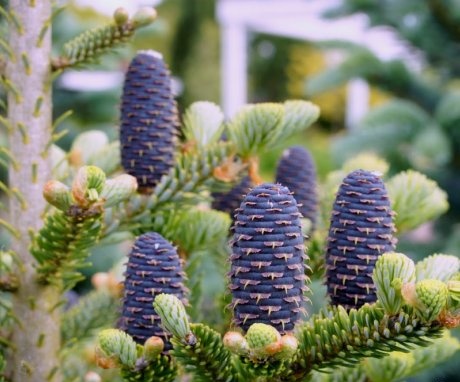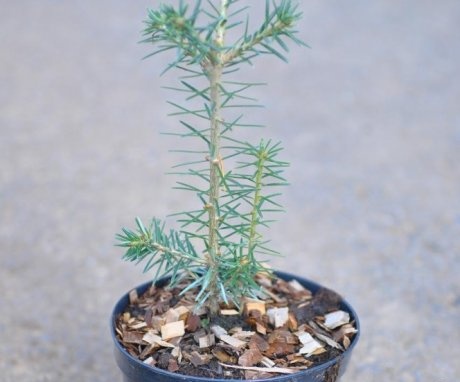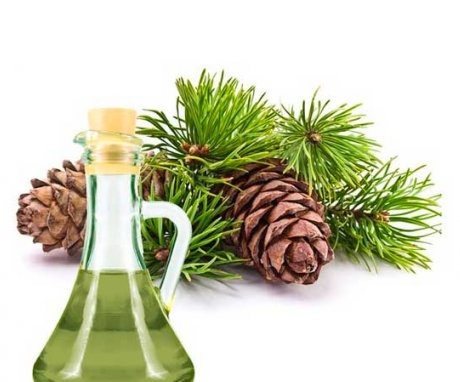Features of growing balsamic fir in the garden
Balsam fir belongs to the pine family and belongs to evergreen conifers. You can recognize such a plant by the needles, which are protruding, spreads in different directions and has a clear parting. The root system is strong and spreads to the surface. Therefore, a hot southern climate is not suitable for this plant. The plant will feel more comfortable in the mountains and lowlands. It is a very shade-loving plant and with proper care can live up to 150-200 years.
Content:
All About Planting Balsam Fir
Outwardly, the plant has a powerful pyramidal shape with a low crown, which in old trees can have a rounded or bipartite shape. The bark has a grayish tint, periodically there are resin veins. The branches are located obliquely and directed upward, however, there is also a horizontal direction. The plant grows 15-25 centimeters annually. However, it grows much more slowly at home.
The "male" cones are located in the sinuses in a single manner. "Female" cones have a vertical arrangement and include seeds and scales. When the seeds reach their maturity, the bud loses its scales, leaving the skeleton on the branch. When ripe, the bud takes on a beautiful purple hue. If you rub a branch of a tree, then a pleasant and fragrant aroma will remain on the palms.
In nature, there are about 20 varieties of such a plant, among them, cultivated and wild varieties are distinguished:
- The most popular among gardeners is dwarf fir... Such a plant has a bizarre flat-round shape. The bright emerald color of the plant with gentle open branches is an excellent decoration for any garden area.
- Another variety of such a plant "Piccolo" is very similar in shape to such a variety. However, it has a bluish color with a green tint and the branches are arranged in a radial manner and slightly deviated downward.
- Another dwarf species with bluish-green needles called "Kiwi" will undoubtedly become the main decorative element of the garden.
- The dwarf variety Hudsonia has a wide crown and dense branches. This variety has a black-green top and a bluish-green bottom. The needles are short, but wide and slightly flat.
- Many gardeners prefer a fir variety like Nana. This variety boasts a height of up to 50 cm and a rounded shape. Possesses high shade tolerance and frost resistance. Ideal for a rocky garden, but will also feel great in special containers.
Thus, the fir is excellent for landscaping the backyard landscape, and the huge number of species presented will allow you to choose any style solution.
At planting fir it is necessary to take into account the qualitative composition of the fir.
The plant loves moist and loose soil.
Especially if the soil is heavy, you need to take care of the drainage, which is made as follows:
- Crushed stone 20 centimeters deep or broken brick is poured into the dug hole.
- The next layer is added fertilizer of mineral origin.
- The last layer is added sawdust.
The composition of the soil is carefully selected and includes the following components:
- Clay
- Leaf land
- Humus
- Peat
- Sand
The plant is planted, in most cases, in alleys at an optimal distance of 4-5 meters. In looser soils, it can be planted at a distance of 3-3.5 meters, and in more compacted soils up to 2.5 meters. Planting of plants must be carried out in the spring season - April or in August or at the beginning of the autumn period. The seedlings planted at the age of 5-10 years adapt as quickly as possible.
When planting a plant, due attention must be paid to the depth of the holes.
It should not be more or less than 60-80 cm. When making a hole, it is important to focus on the size of the coma on the root system. In total, the landing pit should have dimensions of 50x50 or 50x60. When immersing the plant in the hole, you should carefully make sure that the root collar is at ground level.
Fir care
In order for the plant to please for a long time with its appearance, it needs additional care. Having counted two years after the moment of planting, it is necessary to apply a universal mineral fertilizer. It is recommended to water the fir 2-3 times a season. The total volume of water for irrigation should be 15-20 liters. During dry periods, it is advisable to carry out periodic spraying every 2-3 weeks.
Do not overuse watering, as the soil does not tolerate excessive moisture.
Young seedlings must be loosened, keeping a distance of 25-30 cm. From time to time, it is important to mulch the ground with sawdust, peat near the trunk circles at a distance of 5-8 centimeters.
With the onset of spring, it is required to process the shoots by removing the dried branches. It is necessary to give the tree crowns a graceful shape only in the spring. In the first year after planting, the plant is covered with spruce branches for the winter. The more mature the plant is, the less it will need protection from frost. In general, the plant is unpretentious in care, however, it is still recommended to adhere to certain rules.
Breeding features
The plant propagates with the help of seeds.
The seeds are harvested at the beginning of the ripening of the buds. Seeds are planted in autumn or winter, after the seeds are finally prepared and lay in the harvested state for 30-40 days. Typically, seeds are stored at room temperature for one year.
Also, reproduction can be carried out using perennial cuttings, which are removed from the top of the plant.
However, the roots of cuttings germinate after eight or nine months. Crown formation occurs naturally. At first, the plant develops rather slowly, but after 5-10 years, growth is noticeably accelerated, and reaching adulthood it grows again slowly. When the branches of the fir touch the soil, they produce layering.
Fir seeds require additional stratification:
- This procedure consists in keeping the seeds in a moist substrate.
- Sand or perlite can be used as a wet substrate.
- It is undesirable to transfer future crops directly from cold to warm.
- It is necessary to gradually increase the temperature so that the plant adapts to new conditions.
When choosing a fir for reproduction, it is necessary to correctly select a variety. In the middle zone of our country, white fir very often freezes out. And dwarf varieties are more resistant to frost. Fir prefers a maritime climate, since there is no sharp fluctuation in temperature and humidity.
On the garden plot, fir decorates the local landscape. In order to propagate a plant on your own, you need to know certain tricks, otherwise the summer cottage will not be decorated with such a decorative element. Do not forget to carefully study the tree for the presence of pests and fight them in a timely manner. Fir cultivation does not involve high costs and excessive physical effort.
Plant properties
The fir tree possesses a huge number of useful properties... Firstly, fir oil is obtained from it, which has a beneficial effect on the respiratory organs and is used as an inhalation agent. The scent of fir helps people with respiratory diseases to cope with their ailment.
This remedy calms the nervous system. Such a plant is indispensable for coughs, runny nose, contributing to the optimal discharge of sputum. Balsamic fir is the main component of Canadian balsam. Fir resin is a powerful antiseptic.
With the help of such a tool, you can disinfect a wound, treat cuts and abrasions.
Such a plant is indispensable in garden and park construction, as it boasts a lush and graceful shape and a noble color of shiny greenery. However, in an urban environment, they feel discomfort from the abundance of polluted air. Fir goes well with other trees of the middle lane - maples, birches, pines and all kinds of shrubs. Ideal for shearing hedges.
more information about the beneficial properties of fir, you can find out by watching the video.




